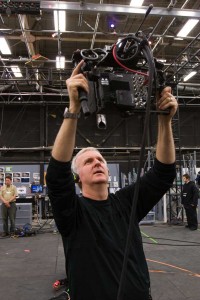
Autodesk announced that it has partnered with Lightstorm Entertainment and Weta Digital to develop a new generation of virtual production technology for the motion picture industry.
Lightstorm Entertainment is James Cameron’s production company, responsible for the 2009 box-office hit Avatar. Weta Digital has a history of pushing the boundaries of visual effects and computer graphics with their work on such films as Avatar, Rise of the Planet of the Apes and The Adventures of Tintin.
The three companies have been working collaboratively to expand the virtual production workflows and technologies that were first developed for Avatar. Some of the tools and enhancements resulting from the collaboration have been incorporated into products in the latest Autodesk Entertainment Creation Suites. These and more developments stemming from the technology partnership will be used in the production of the Avatar sequels.
“Creating the virtual production pipeline on Avatar was a groundbreaking process that only enabled us to scratch the surface of what is possible,” said Cameron. “Together with Autodesk and Weta Digital, we have used the knowledge gained from this first experience to clearly define the ideal process and then develop the technology needed to streamline our workflow. With the resulting pipeline, on the Avatar sequels, I will be able to devote more of my energy to the creative side of the movie-making process, and dig deeper into all that is possible with virtual production.”
Virtual production involves applying the power of digital toolsets to the entire movie-making process. This allows the director and other creative collaborators to see their assets in a fully interactive world, live on set, so they can make better decisions more quickly. This interactive, nonlinear process spans from digital world building, character development and previsualization, to performance capture, virtual cinematography, visual effects and all the way to final render.
Pioneered by Cameron on Avatar, it has since been adopted by renowned directors like Steven Spielberg and Peter Jackson.
To develop the next generation of virtual production technology, Weta Digital forged a particularly close relationship with Autodesk and its development team. As the visual effects studio on Avatar, and The Adventures of Tintin, as well as the upcoming The Hobbit: An Unexpected Journey, Weta Digital has established expertise in the virtual production process.
“After completing Avatar, we had a clear understanding of the developments needed to make the process more creative and efficient,” said Joe Letteri, senior digital effects supervisor at Weta Digital. “We knew that by bringing the whole digital pipeline more in line with the traditional on-set style of shooting we could open up brand new ways for directors like Jim to make their films. When we’re charting new territory like this, it’s invaluable to have a partner like Autodesk whose tools are the platform and the standard in the industry.”
“Lightstorm and Weta Digital were behind some of the most visually stunning movies of the last decade,” said Carl Bass, Autodesk CEO. “By bringing together their talent and experience with our own expertise, we are creating tools to help our customers take better advantage of important developments in movie making and visual effects.”
As part of the Entertainment Creation Suites 2013, the new virtual production enhancements will help studios adopt the virtual production process. The tools, found in Autodesk MotionBuilder and Autodesk Maya software, will help improve performance, workflow and image fidelity.
MotionBuilder now loads, saves and merges files together much faster than before, and is more closely integrated to the editorial workflow. Motion capture and live input data can be recorded to disk in the software’s non-linear editor so directors can record multiple takes in rapid sequence; actors can act out their scenes uninterrupted, and stage crew can work instantly with editorial to build and refine shots.
The software now supports HD-SDI video output, which allows MotionBuilder to be integrated into studio video broadcast systems. This gives creatives more accurate real-time feedback on their virtual camera work.





